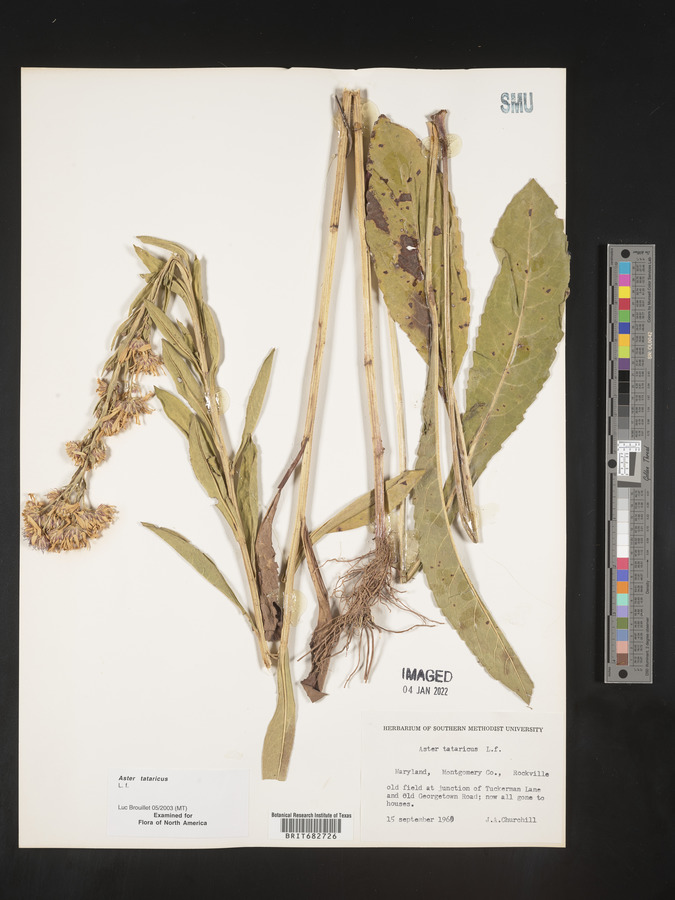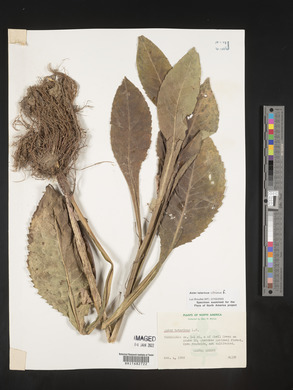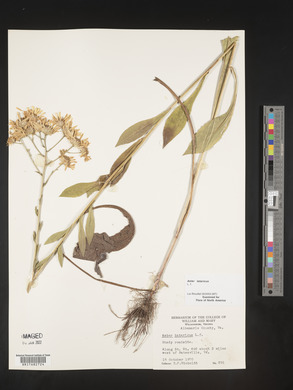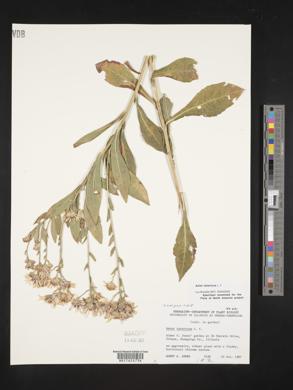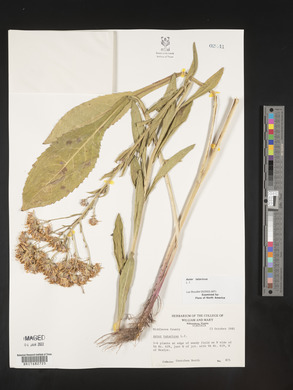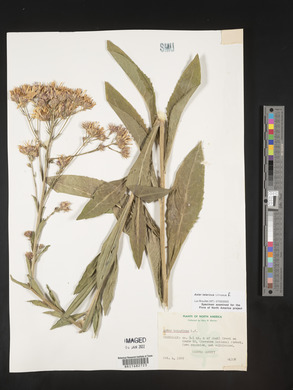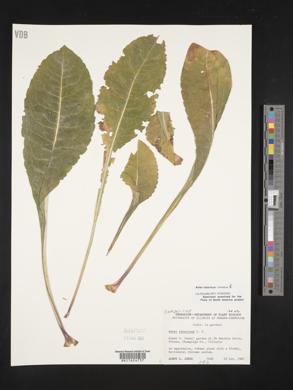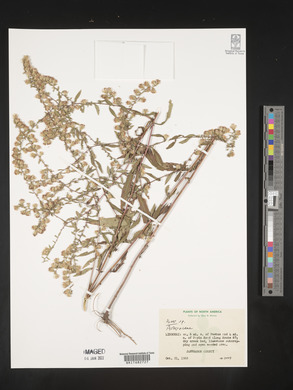Aster tataricus
|
|
|
|
Family: Asteraceae
Tatarian Aster
[Aster tataricus var. tataricus] |
Plants 50-150(-300) cm, densely colonial; rhizomes fleshy, ± woody with age, with abundant fibrous roots. Stems 1-3+, erect, sparsely to densely (distally) strigillose. Leaves basal and cauline, very coarse, margins scabrous, apices mucronate, faces scabrous; basal usually deciduous by flowering; proximal cauline persistent, long-petiolate (petioles ± winged, bases sheathing), blades strongly 1-nerved, oblanceolate, 300-500 × (50-)60-120 mm, bases attenuate, margins undulate, recurved, coarsely serrate, teeth mucronate, apices acuminate, acute, or rounded; mid and distal subpetiolate to sessile, blades oblanceolate to lanceolate, 40-180 × 10-50 mm, bases attenuate to cuneate, sheathing, margins serrate or entire, apices acute to acuminate; distal (arrays) abruptly reduced, lanceolate, 5-10 mm, apices acute to acuminate. Heads 14-50+ in corymbiform arrays, branches ascending. Involucres campanulate, (6.5-)7-10(-12) mm. Phyllaries in 3-4 series, ovate to lanceolate (outer) or linear-lanceolate to linear (inner), green to base along midnerves or outer sometimes largely foliaceous, apices acute (outer) to long-acuminate (inner), abaxial faces glabrous or sparsely strigillose. Rays 14-30; laminae pale lavender or purple, 10-15 × 1.5-2.5 mm. Disc florets (20-)25-30(-50); corollas light yellow turning lavender at least in lobes, (4.5-)5-6 mm, tubes about as long as campanulate throats. Cypselae light brown, linear-obconic, slightly compressed or plump, 1.5-2 mm, nerves 4-5(-6), faces glabrate to thinly strigillose; pappi white or cream-colored, 6-8 mm, shorter than disc corollas. 2n = 54. Flowering fall. Fields, open roadsides; 0-1000 m; introduced; Ala., Conn., Del., Ga., Ill., Iowa, Ky., Mass., Mich., N.J., N.C., Ohio, Pa., R.I ., Tenn., W.Va.; Eurasia (native to s Siberia). Aster tataricus has been reported from Maryland, Missouri, and Virginia; I have not seen supporting specimens. Cultivars of Tatarian aster are grown in North America (J. C. Semple et al. 2002), where they sometimes escape from cultivation.
Coarse, rough-hairy plants, 5-20 dm from a stout caudex; lower lvs long-petiolate, with large, elliptic, conspicuously toothed blade 8-40 נ2.5-15 cm, the middle and upper smaller, sessile or nearly so, and mostly entire; infl corymbiform, flat-topped; invol 7-10 mm, strigose-puberulent or subglabrous, its bracts not much imbricate, the larger ones mostly 1-2 mm wide; rays 15-20, purple or blue, 1-2 cm; 2n=54. Native of s. Siberia, casually escaped from cult. in e. U.S. Gleason, Henry A. & Cronquist, Arthur J. 1991. Manual of vascular plants of northeastern United States and adjacent Canada. lxxv + 910 pp. ©The New York Botanical Garden. All rights reserved. Used by permission. From Flora of Indiana (1940) by Charles C. Deam ...... Indiana Coefficient of Conservatism: C = null, non-native Wetland Indicator Status: n/a |

